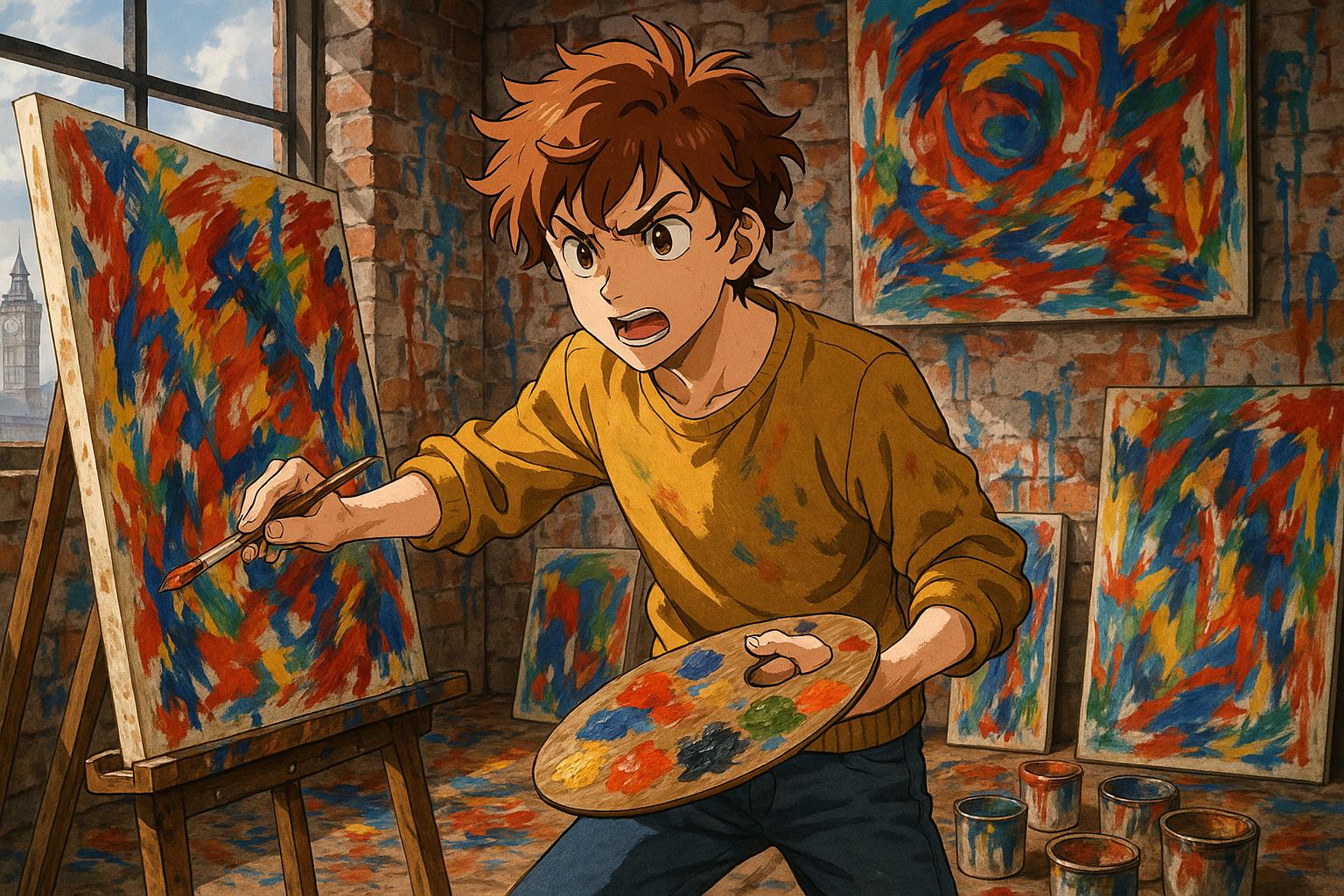Years before he became the globally regarded figure of modern art, David Hockney was navigating the tumultuous waters of artistic discovery as a student in London. A recent exhibition at Hazlitt Holland-Hibbert showcases works from Hockney's formative years between 1960 and 1963, a period that profoundly shaped his future trajectory. Curated by Louis Kasmin, the exhibition offers insight into the raw energy and chaotic expression that characterised Hockney’s early art, shedding light on a time when his style was in stark contrast to the cool, curated aesthetics for which he later became famous.
Hockney's journey commenced at the Royal College of Art (RCA) in 1959, following his studies at the Bradford School of Art. The gallery displays a series of vibrant, often frenetic works that diverge sharply from the serene, flat colours found in his later pieces. At RCA, Hockney was heavily influenced by the abstract expressionists of the time, particularly artists like Alan Davie and Jackson Pollock. His early works are characterised by aggressive strokes, chaotic forms, and a palpable sense of emotion—a sharp departure from the precision that would come to define his later style. Pieces such as "Erection" and "Shame" are brimming with sexual overtures and represent not only personal exploration but also the climate of burgeoning identity in a time when homosexuality was still largely stigmatised.
These offerings from Hockney’s early years reflect an exploration of freedom, passion, and the tumult of youth. His paintings are infused with themes of sexual awakening; "We Two Boys Clinging Together" references the poetry of Walt Whitman, illustrating the artist’s embrace of his identity within a world that often suppressed it. Critics note that these pieces do not merely mimic other modern art icons but rather synthesise a myriad of influences, resulting in something altogether unique—a mash-up of rich inspirations from contemporary and traditional sources alike.
Around this time, Hockney emerged alongside contemporaries like Derek Boshier, Patrick Caulfield, and Allen Jones, who would later be pivotal in the nascent pop art movement. The pressure to distinguish himself in a crowded field undoubtedly catalysed a shift in his focus from abstraction to figurative representation. As the exhibition unfolds, viewers witness this evolution; Hockney starts to channel the energy of his experiences into a more assured and narrative-driven style. Notable works include his reinterpretation of "A Rake’s Progress," where he eschews abstraction in favour of striking political expression.
The latter works on display move beyond mere emotional chaos into confident representations of life, identity, and societal commentary. Hockney’s creative evolution during this period culminates in pieces featuring blurring figures and the imaginative embodiment of urban life, capturing the essence of a city teeming with historical and contemporary tensions.
While it is tempting to characterise this exhibition solely as a precursor to Hockney's illustrious career, it stands as significant art in its own right—a vivid portrait of youth and artistic rebellion. The collection reveals not only the struggles and triumphs of a young artist but also the vibrant milieu of early 1960s London, a city that would serve as both catalyst and muse for Hockney's expanding vision.
In essence, the exhibition at Hazlitt Holland-Hibbert does not merely document the nascent phase of a celebrated artist’s journey; it recounts the exhilarating pulse of youth, the boundless curiosity of a creative mind, and the fervent exploration of identity and sexuality. This moment in Hockney's life serves as a reminder of the tumultuous passion that underpins true artistic expression, while marking the beginnings of an extraordinary career.
Reference Map
- Paragraphs 1, 2, 3, 4, 5, 6, 7.
Source: Noah Wire Services
